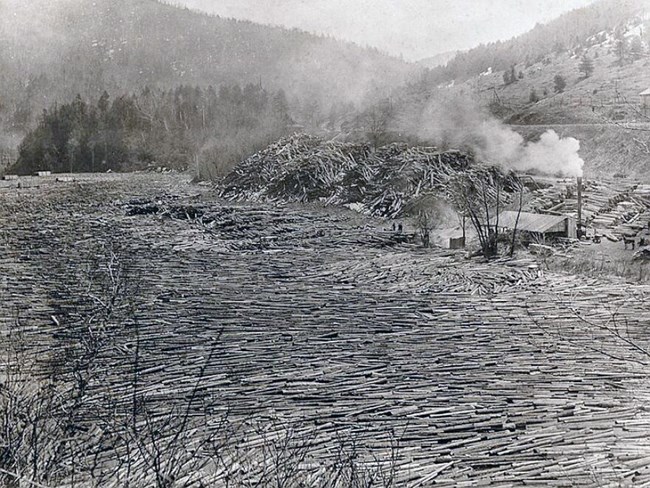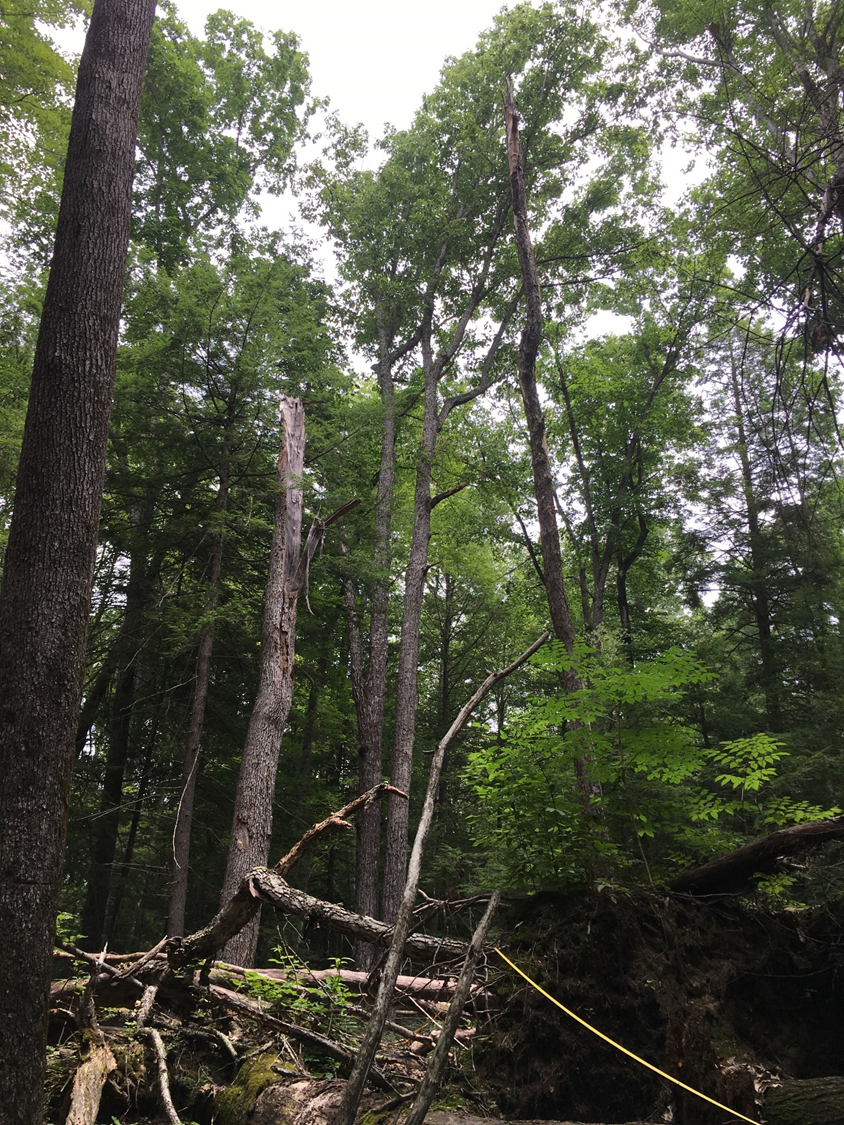Part of a series of articles titled Managing Resilient Forests Initiative for Eastern National Parks.
Article
Resilient Forests Initiative - Forest Complexity

VT Historical Society.
Enhancing tree regeneration and forest complexity protects the future forest.
Let there be Light!
Many of the forests in the Appalachian and Mid-Atlantic regions are around the same age, regrowing after widespread land clearing that peaked between the 1880's and 1920's. Throughout the twentieth century, forests began to regenerate, eventually spreading onto abandoned agricultural lands. Middle-aged forests, like those found in many national parks in the Appalachian and Mid-Atlantic regions, have mature tree canopies that soak in most light before it can reach the forest floor. Tree seedlings that manage to sprout in these closed-canopy forests struggle to get enough light to thrive and grow into young trees.
Tree species that are short-statured at maturity and will never reach full canopy height, or trees not typical of the surrounding forest type can be thinned from the lower canopy by park management. This helps preserve the native forest community and allows more light to reach the forest floor, while also benefiting wildlife and diversifying the forest making it more resilient to future disturbances. Trees can be thinned by girdling (which also creates ecologically beneficial standing dead tree-snags) or felled to create canopy gaps and increase the amount of coarse woody debris (CWD) on the forest floor. Snags are essential habitat for cavity-nesting birds and mammals, while CWD provides important habitat for insects, amphibians, reptiles, small mammals, and fungi. Downed trees also provide important habitat and nutrients for tree seedlings to germinate, especially as light is increased under the canopy.
Vital to the long-term success of a thinning program is that it should only occur in forests that are free from invasive plants and contain enough seedlings of desired canopy trees. Parks must make sure invasives are treated prior to (and continually managed thereafter) and desired tree regeneration is well-established before creating gaps. If these steps aren't taken, any invasive plants or undesirable woody plants that are present will thrive in a canopy gap. Forest health monitoring data from the Inventory & Monitoring program can help determine which forest stands have enough regeneration of desired trees to conduct thinning.
Once a forest contains advanced regeneration (taller seedlings and saplings of desired trees) small canopy openings can be made, one-tenth to one-quarter of an acre (0.05 to 0.1 ha) ideally, using chainsaws and hand tools so that forest floor disturbance is kept to a minimum. This closely simulates the natural forest regeneration process that takes place when single, large old trees die allowing seedlings and saplings around it to mature.

NPS image.
Tags
- allegheny portage railroad national historic site
- appomattox court house national historical park
- blue ridge parkway
- bluestone national scenic river
- booker t washington national monument
- delaware water gap national recreation area
- fort necessity national battlefield
- fredericksburg & spotsylvania national military park
- gauley river national recreation area
- gettysburg national military park
- hopewell furnace national historic site
- new river gorge national park & preserve
- petersburg national battlefield
- richmond national battlefield park
- valley forge national historical park
- invasive plant management
- resilient forest management
- white tailed deer
- deer management plan
- deer management
- ermn
- vegetation
Last updated: September 27, 2024
